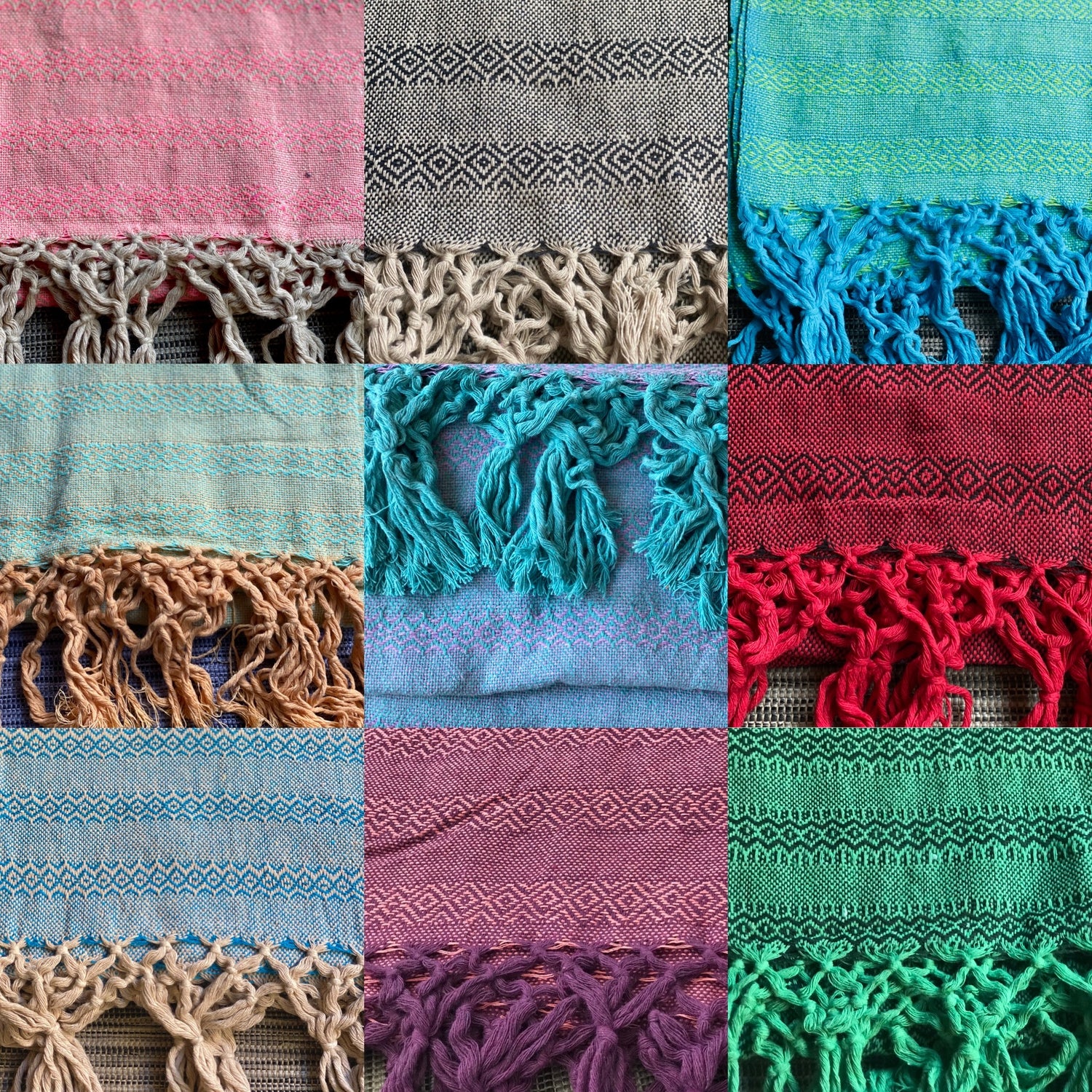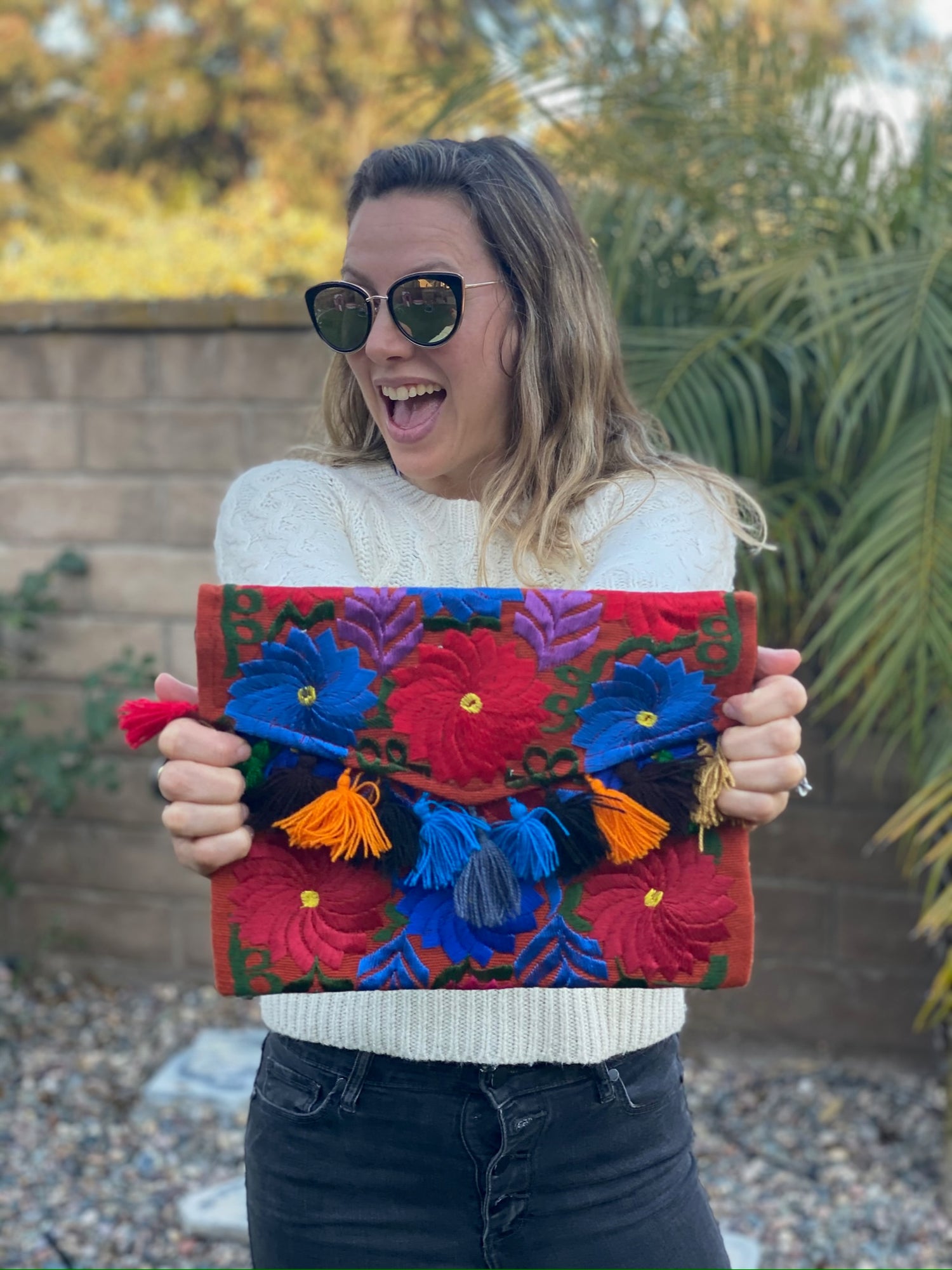Rebozos are not just beautiful pieces of fabric; they represent a deep connection to Mexico's indigenous heritage and culture.
You will discover how these traditional shawls play a vital role in preserving the craftsmanship of indigenous women who have passed down their skills through generations.
As modern influences threaten this art form, the challenge to maintain these cultural treasures becomes more pressing than ever.

The history of the rebozo spans centuries, illustrating its significance in both daily life and ceremonial practices. Each rebozo tells a story, reflecting the identity and heritage of the artisans who create them.
Learning about these traditions will help you appreciate the intricate artistry involved and the personal stories that reside within each garment.
In this article, you will explore the current state of rebozo craftsmanship and the efforts being made to keep this important cultural symbol alive.
You will also find out why safeguarding these traditions matters not only to Mexico but to global cultural diversity.
Key Takeaways
- The rebozo embodies the rich heritage and history of indigenous craftsmanship in Mexico.
- Current efforts by artisans aim to preserve this important cultural symbol against mass production.
- Understanding the significance of rebozos deepens appreciation for indigenous culture and identity.
History and Evolution of the Rebozo

The rebozo has a rich history that highlights its significance in Mexican culture. To understand its evolution, you will explore its origins, the traditional techniques used to create it, its symbolism, and the influence of notable figures in the world of art and culture.
Origins in Mesoamerica
The rebozo originated in Mesoamerica, dating back to pre-Hispanic times. Indigenous communities, particularly women, crafted the shawl from local fibers like cotton and agave.
These artisans used the backstrap loom, a traditional weaving technique that allowed them to create intricate patterns. Regions such as Oaxaca, Chiapas, and Tenancingo became central to rebozo production.
The garments served both practical and ceremonial purposes, making them essential to daily life and significant rituals.
Over the centuries, the rebozo has evolved while maintaining its core cultural relevance.
Traditional Weaving Techniques
The art of weaving a rebozo is labor-intensive and requires great skill. Artisans employ various techniques, including ikat, where patterns are dyed into the threads before weaving.
This method allows for vibrant colors and complex designs, reflecting the culture of the region. The use of the backstrap loom is also crucial, as it connects the weaver to their craft and heritage.
Each artisan brings their unique touch, creating distinct variations of the rebozo across different regions. This diversity showcases not only their craftsmanship but also the identity of the communities they belong to.
Symbolism and Cultural Identity
The rebozo holds deep cultural significance in Mexican society. It symbolizes identity, tradition, and womanhood. The shawl often features specific symbols that represent heritage and spirituality.
In various rituals and ceremonies, it plays a role in expressing cultural beliefs and values. For many, wearing a rebozo is an act of pride, linking them to their indigenous roots.
The traditional designs can convey messages about the wearer’s identity and status within the community. Thus, the rebozo remains a powerful emblem of resilience and cultural continuity.
Influence of Notable Figures
Notable figures have helped raise awareness of the rebozo's cultural importance. Frida Kahlo, the iconic Mexican painter, often wore rebozos in her artwork and daily life.
Her use of this emblematic shawl not only showcased Mexican craftsmanship but also highlighted its connection to identity and femininity.
By incorporating the rebozo into her image, Kahlo contributed to its recognition and appreciation both in Mexico and abroad. The impact of such figures helps keep the tradition alive in contemporary consciousness, bridging past and present.
The Craftsmanship of Rebozos Today

The craftsmanship of rebozos today reflects a blend of traditional techniques and contemporary innovation. This section explores how modern designers and indigenous communities work together to preserve their rich heritage while adapting to current fashion trends.
Contemporary Designs and Designers
Today, rebozos feature a variety of contemporary designs that celebrate indigenous craftsmanship. Designers like Carla Fernández incorporate traditional patterns and vibrant colors into their collections.
These pieces often showcase intricate designs that respect cultural identity while appealing to modern tastes.
Many rebozos are made using natural materials, including cotton and silk. These materials are chosen for their durability and beauty. The use of natural dyes enhances the striking appearance of the textiles, allowing for a diverse range of colors and patterns.
Preservation and Revitalization Efforts
Efforts to preserve the artistry of rebozo weaving are gaining momentum. Local artisans often lead these initiatives, sharing their knowledge with younger generations.
Workshops and community programs aim to teach traditional weaving techniques to ensure these skills are not lost.
Indigenous communities are increasingly involved in reviving manufacturing practices. They focus on using sustainable resources and maintaining the integrity of their crafts.
This movement is fueled by a growing respect and love for their heritage, allowing these communities to thrive alongside evolving fashion trends.
Rebozos in Fashion and Lifestyle
Rebozos have found a prominent place in contemporary fashion and lifestyle. They are not just worn for cultural events but are embraced in everyday wardrobes.
The versatility of rebozos enables you to wear them in numerous styles, whether as a shawl, scarf, or decorative accessory.
Fashion designers are increasingly highlighting rebozos in their collections, bringing attention to their beauty and significance.
These efforts contribute to a broader appreciation of indigenous textiles, encouraging you to recognize the stories woven into each piece. Your choice to wear a rebozo connects you to a rich cultural history, highlighting the pride and craftsmanship behind these traditional garments.
Frequently Asked Questions

In this section, you will find answers to common questions about the rebozo, its cultural importance, and the challenges faced by artisans. You’ll learn how the traditional techniques are preserved and how they are used in everyday life.
What is the cultural significance of the rebozo in indigenous communities?
The rebozo holds deep cultural meaning for many Indigenous communities in Mexico. It symbolizes identity, tradition, and history.
Women often pass down the art of rebozo-making through generations, making it an important aspect of their cultural heritage.
How is the traditional art of rebozo-making being preserved?
To preserve the art of rebozo-making, communities conduct workshops and training sessions. These gatherings allow experienced artisans to teach young people the skills needed to create these beautiful textiles.
Additionally, local museums and cultural organizations promote awareness and appreciation of this craft.
What are the challenges faced by indigenous artisans in maintaining rebozo craftsmanship?
Indigenous artisans face several challenges, including the rise of mass-produced textiles. Many struggle to compete with cheaper, machine-made alternatives.
This threatens the survival of traditional crafts and makes it difficult for artisans to earn a living.
How are rebozos typically used in local customs and practices?
Rebozos serve multiple purposes in daily life. They are worn as clothing, used to carry babies, and play a role in rituals and ceremonies.
The versatility of rebozos makes them an essential item in many Indigenous communities.
What methods are being employed to revive interest in rebozo weaving techniques?
Efforts to revive interest in rebozo weaving include social media campaigns and community events. Artisans showcase their work online, helping to reach a wider audience.
Collaborative projects with designers also bring traditional techniques into modern fashion.
In what ways can individuals contribute to the support and preservation of the rebozo tradition?
You can support the tradition by purchasing handmade rebozos from local artisans.
Attending cultural events and workshops helps raise awareness.
Spreading knowledge about the importance of rebozos also contributes to their ongoing preservation.




